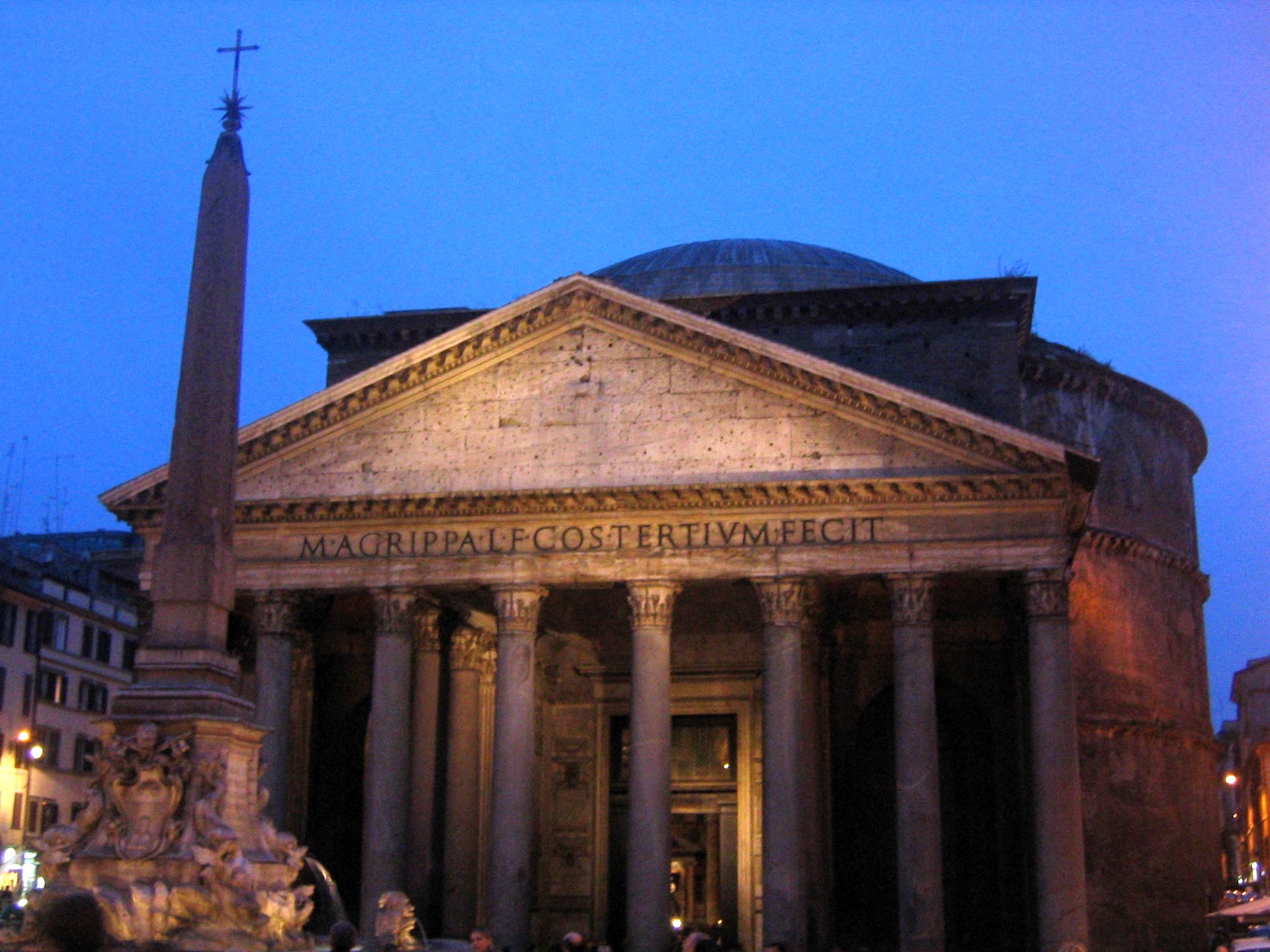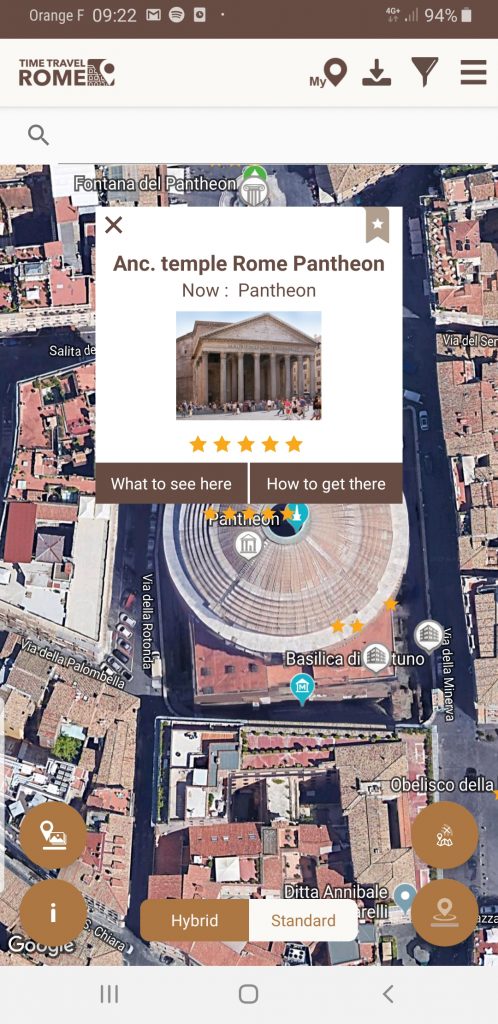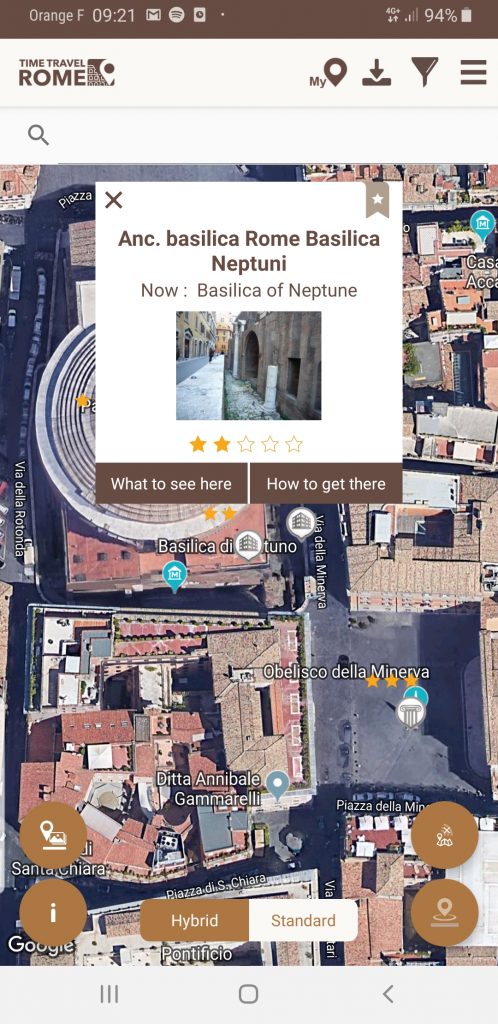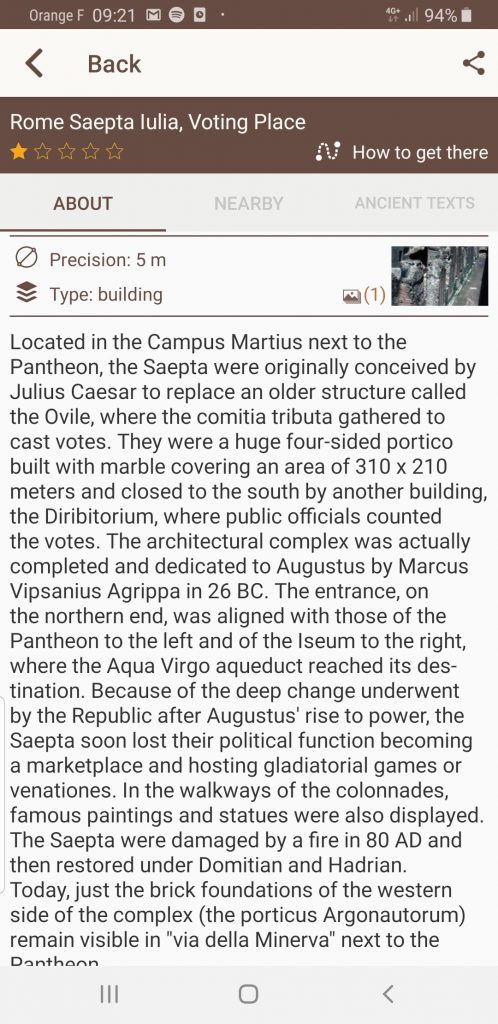Augustus once famously said that he “found Rome a city of brick and left it a city of marble.” Much of that work was accomplished through the deputation of Marcus Agrippa. When Augustus came to power, the city of Rome was not how we imagine it today. Having grown too large, too fast, it was a messy, ever-growing collection of brick and wooden buildings, prone to fires. The streets were filthy, filled with excrement, both human and animal.
Though Agrippa’s works could not fix every issue with the city, his term as aedile was immensely successful, and he left the city in significantly better shape than he found it. In addition to cleaning and repairing the streets and sewers, which included the Cloaca Maxima, the largest sewer line of the city, Agrippa also commissioned and funded many public structures. Here are five of Agrippa’s top building projects as aedile of Rome. Even though some of these buildings have left few remains to see today, they are still worth acknowledging in honor of the man that built them.
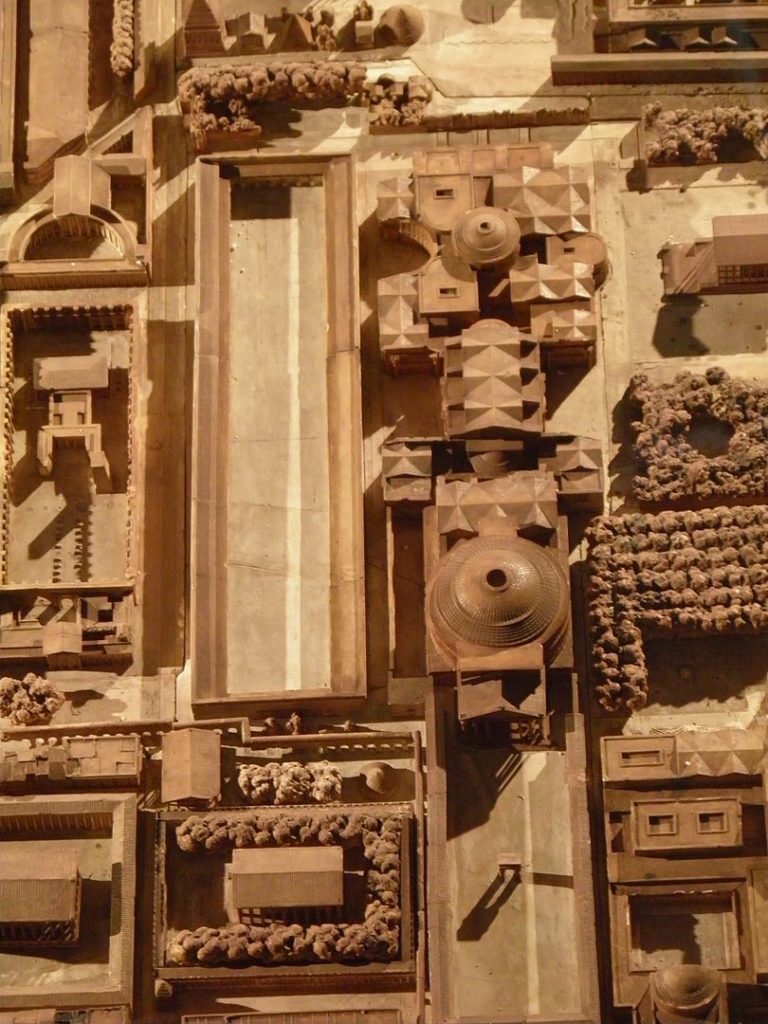
5. Baths of Agrippa
According to Cassius Dio, Agrippa first began work on the city’s first public hot water baths in 25 B.C., the same year that he started the Pantheon. The baths were adorned with beautiful statues and works of art. One that was of particular note was a wondrous statue, Lysippus’s Apoxyomenos. It stood outside the front of the bathing complex until Emperor Tiberius—who maintained a deep appreciation for the arts—loved the statue so much he had it moved to his bedroom, substituting the original with a copy. Such was the public’s indignation at this, however, that they staged a protest in one of the city’s theatres, forcing the reluctant emperor to return it.
The baths suffered damage during the reign of the Emperor Titus in the fire of 80 A.D., but it was not repaired until Hadrian’s rule some decades later. The last recorded restoration occurred under the joint reign of Constantius II and Constans in 345 A.D. All that remains of Agrippa’s magnificent 90 by 120 metre bath complex, which occupied the area between Corso Vittorio Emanuele and Via di Santa Chiara, is an imposing section of wall. This once made up the complex’s large semi-circular hall, which supported a large dome with a diameter of 23 metres. Made from brick, it doesn’t belong to Agrippa’s original baths of the first century BC but dates to a later, probably Severan restoration. An attempt to reconstruct the plan of then original Bath complex can be fund on the website of the American Academy in Rome.
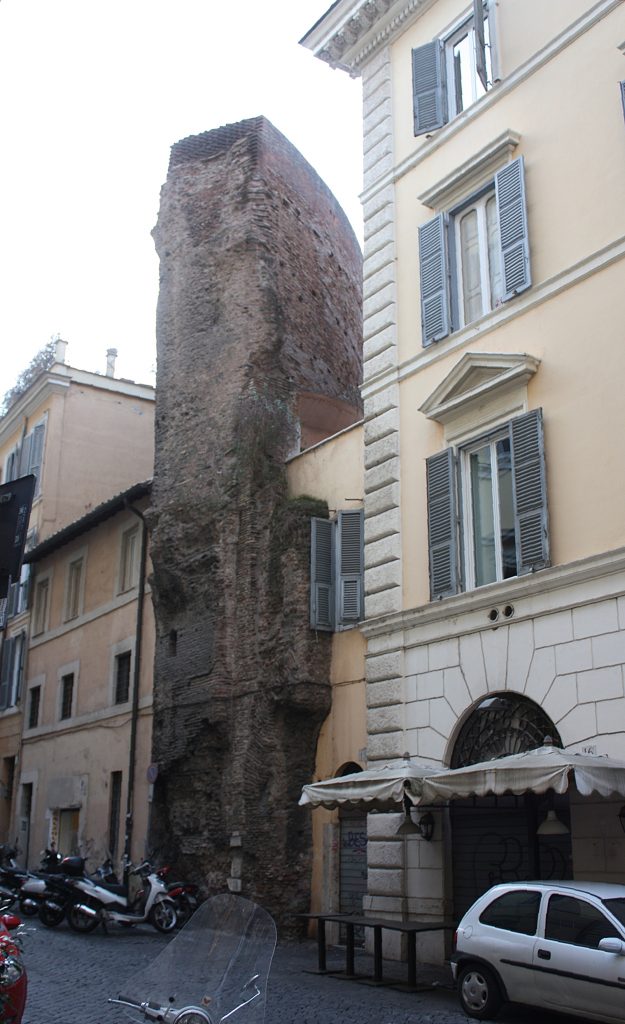
4. Saepta Julia
Located in the Campus Martius next to the Pantheon, the Saepta were originally conceived by Julius Caesar to replace an older structure called the Ovile, where the comitia tributa gathered to cast votes. They were a huge four-sided portico built with marble covering an area of 310 x 210 meters and closed to the south by another building, the Diribitorium, where public officials counted the votes. The architectural complex was actually completed and dedicated to Augustus by Marcus Vipsanius Agrippa in 26 B.C.
The entrance, on the northern end, was aligned with those of the Pantheon to the left and of the Iseum to the right, where the Aqua Virgo aqueduct reached its destination. Because of the deep change underwent by the Republic after Augustus’ rise to power, the Saepta soon lost their political function becoming a marketplace and hosting gladiatorial games or venationes. In the walkways of the colonnades, famous paintings and statues were also displayed. The Saepta were damaged by a fire in 80 AD and then restored under Domitian and Hadrian. Today, just the brick foundations of the western side of the complex (the porticus Argonautorum) remain visible in “via della Minerva” next to the Pantheon.
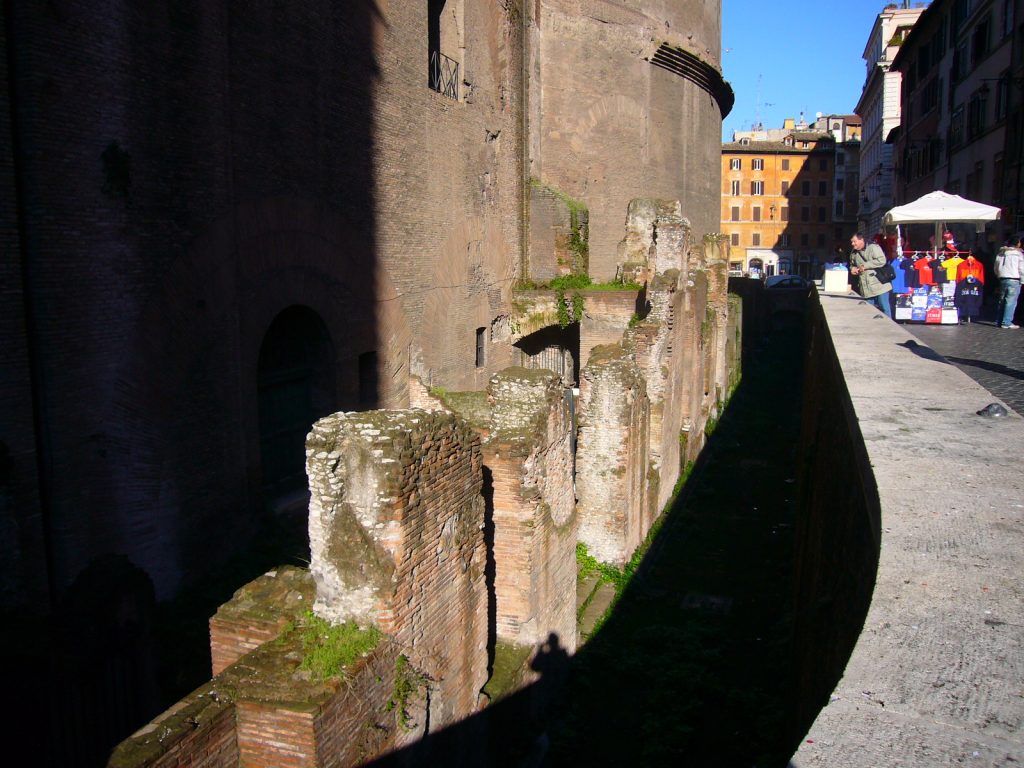
3. Basilica of Neptune
Built in 25 B.C. to commemorate his and Augustus’s naval victories
against Sextus Pompey and Mark Antony, the basilica stood between the Pantheon
and (later) the Temple of Hadrian. The year after Vesuvius’s eruption, it fell
victim to the fire of 80 AD—two successive disasters that nearly drove the
incumbent emperor Titus to take his own life.
In its day, the Basilica of Neptune was a beautiful-looking building,
furnished, Cassius Dio tells us, with a magnificent painting of the Argonauts.
Today, all that remains of the basilica are the vague vestiges that protrude
out of the brick wall behind the Pantheon. Stand on the Via della Palombela and
you can see two of its Corinthian columns and a number of the basilica’s
niches. Between the columns is the basilica’s main apse, and above the left
column is a frieze on which—if you squint your eyes—you can just about make out
the relief of two dolphins.
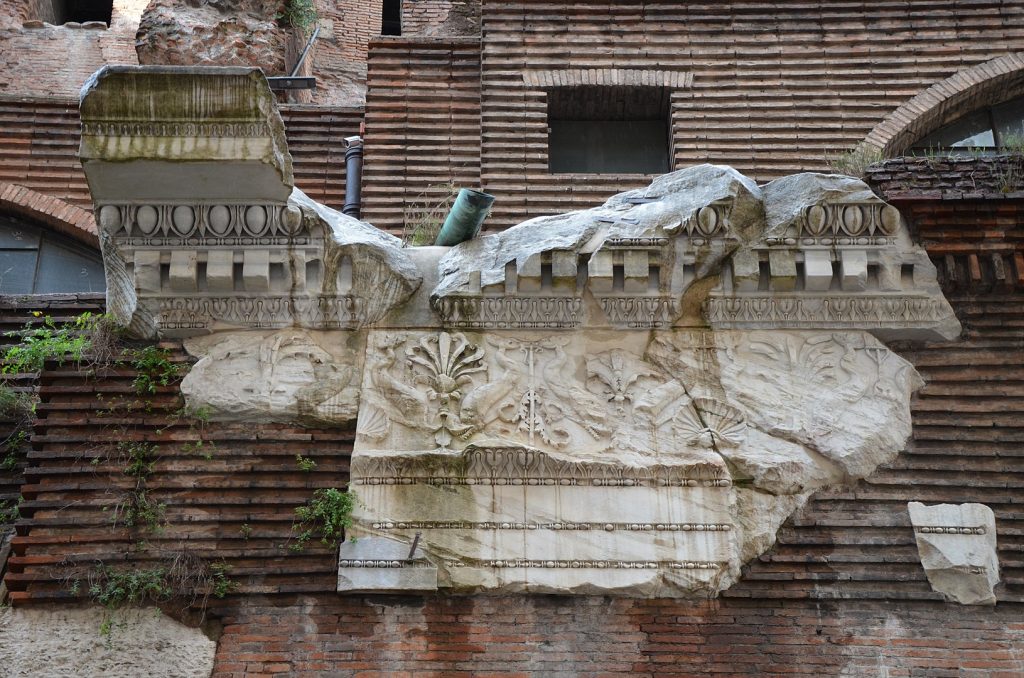
2. Aqua Julia
Built by Marcus Agrippa in 33 BC, the Aqua Iulia derived its name from the Julian lineage of his princeps and patron, Augustus. Agrippa implemented a remarkable constructional project aimed at revolutionising Rome’s water supply and modernising it so it was up to the standards of Augustus’s “city of marble.” Agrippa’s Aqua Iulia shared its source (in Tusculum, near the Via Latina’s twelfth milestone at the Ponte degli Squarciarelli) with the Aqua Tepula. And it shared its course through the city of Rome with the Aqua Marcia. The Aqua Iulia ran for around 14 miles from its source to its main terminus near the Porta Viminalis.
The most impressive remains of the Aqua Iulia can be found at Porta Maggiore and Piazzale Labicano. Each of the three levels of the arched section shows the conduit of one of the aqueducts. Water from the Aqua Marcia (144 BC) flowed along the bottom; water from the Aqua Tepua (125 BC) flowed along the middle; and water from the Aqua Iulia flowed along the top. It made sense: because the water travelled the same course it was simpler to reuse the arches of the original Aqua Marcia.
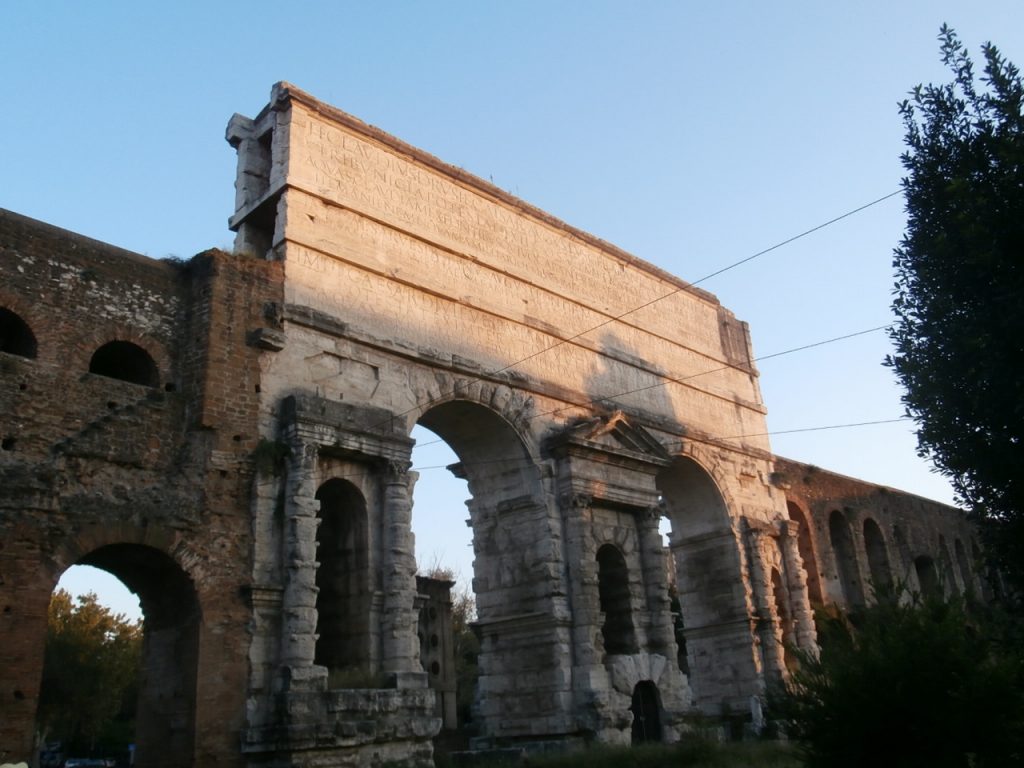
1. The Pantheon
The original Pantheon was built by Marcus Agrippa, sometime
after the Battle of Actium in 31 BC. Even in antiquity there was some
controversy around its name. Literally meaning, “honour all gods” in Greek (παν
θεον), we know that Agrippa’s building did indeed display the statues of many
gods, including those of Mars and Venus. However, the third century historian
Cassius Dio also suggests that it could have been given its name because the
temple’s iconic vaulted roof resembled the heavens.
The Pantheon’s attribution to Agrippa is misleading though. Despite the
inscription that greets you on the front of the temple—M[arcus] Agrippa L[ucii]
f[ilius] co[n]s[ul] tertium fecit (Marcus Agrippa built this)—what stands today
is not the original Pantheon. Agrippa’s Pantheon was destroyed in the fire of
80 AD (some 37 years before Hadrian ascended to the throne) and anything that
survives is most likely subsumed within the current building. Hadrian rebuilt
it, but chose to play modest and kept the old inscription. The emperor famously
executed the Pantheon’s Greek architect, Apollodorus of Damascus, over an
argument about the structure.
The exterior façade and vaulted ceiling are the only relics of the Pantheon’s
ancient past. That said, having mysteriously survived the barbarian raids that
proved lethal for the city’s other architectural legacy, the Pantheon is
Ancient Rome’s best-preserved monument. The Christians transformed it into a
Church in 609 and it still functions as one: St Mary of the Martyrs. It’s the
final resting place of Italian kings, poets and the artist Raphael, and 2,000
years after its construction the Pantheon can still claim to have the world’s
largest unsupported Dome.
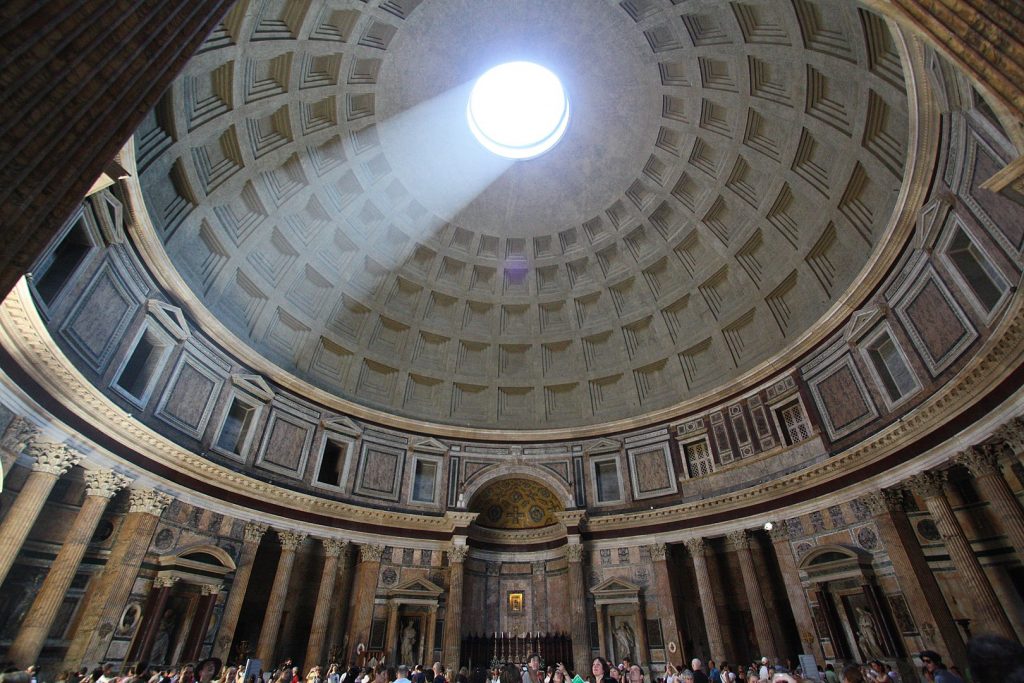
Agrippa buildings on Timetravelrome App:
All buildings described above are precisely mapped by the Timetravelrome app on the map of Rome, alongside 190 other Roman monuments. Each monument is provided with an up-to-date description.
Author: Written for Timetravelrome by Marian Vermeulen
Header image: Il Pantheon di sera by Alessio Nastro Siniscalchi. Licensed under CC BY-SA 2.5 it.
